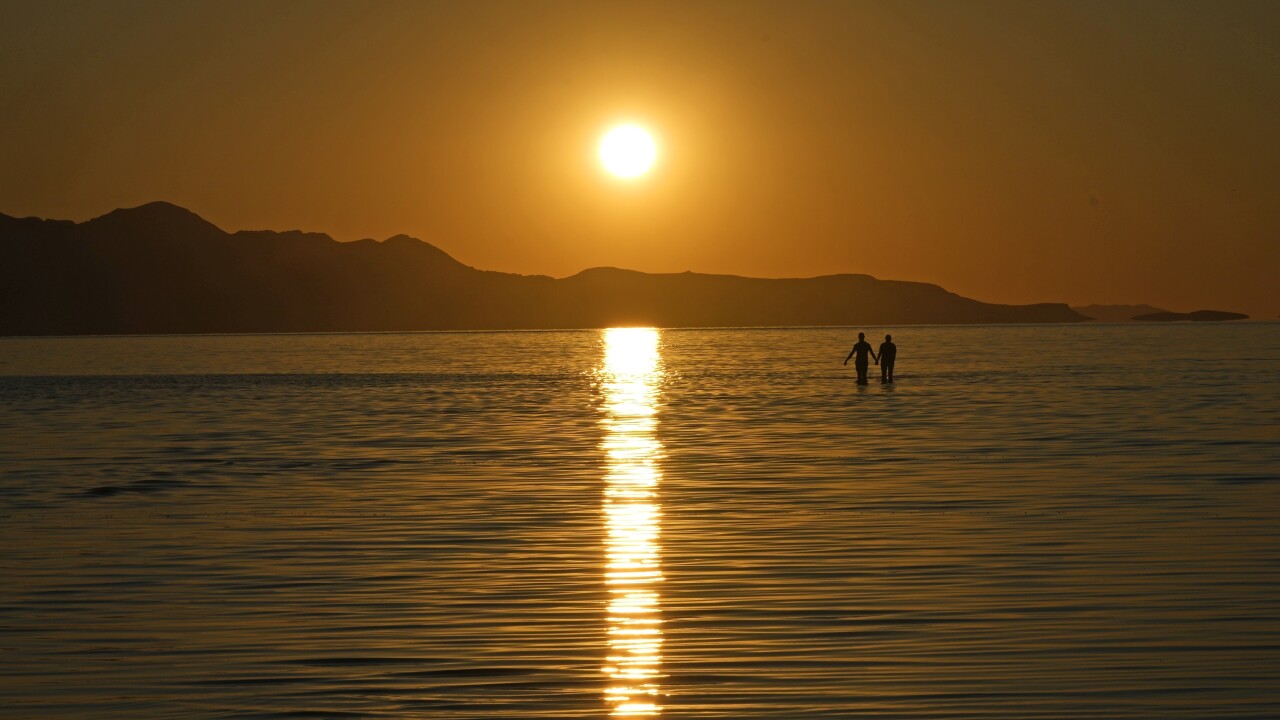SALT LAKE CITY — Happy New Water Year, Utah!
The state ended its water year with signs of improvement. Most of the state is no longer in drought, and overall, things are looking better.
"We are at about 139% of normal precipitation," said Candice Hasenyager, the director of Utah's Division of Water Resources. "That’s thanks to the big winter we had. As far as reservoir levels, we're at 76% of normal and that’s 20% more than our normal levels this time of year. So we’re doing really good."
The winter and Utahns' continued efforts to conserve water have helped push the state into a better place than previous years. As temperatures start to decline and snow begins to fall in the mountains, it will give us a head start on next year. As for the winter forecast, the National Oceanic and Atmospheric Administration's Climate Prediction Center gives us an "equal chance" of having either an above-normal or below-normal winter.
The Great Salt Lake rebounded 5 1/2 feet from its historic low last year thanks to the record-breaking winter we had. But lake levels started dropping again, as expected.
"Right now, we're still about four feet above where we were at a record low last year. We're not done yet," Hasenyager said. "Last year’s record low was seen in November, so we’re anticipating the elevations to drop slightly. But we’re in a better place than we were last year."
That puts the Great Salt Lake five to six feet below what's considered ecologically healthy. A shrinking lake creates many problems for Utah with exposed lake bed that whips up toxic dust (arsenic is a naturally-occurring mineral buried in the lake bed), reduces snowpack in the mountains and harms public health, wildlife and Utah's economy tied to the lake.
Over the weekend, FOX 13 News' camera positioned atop the Natural History Museum of Utah captured large clouds of dust blowing off the exposed lake bed into populated areas. The Utah Department of Quality said that while the dust certainly looked bad, its air quality sensors did not register levels of PM2.5 or PM10 that exceeded healthy limits or triggered alarms. In other words, it could have been a big — but short — dust storm that wasn't persistent and didn't trigger alarms.
With the start of a new watering year, the Utah Department of Natural Resources is asking residents to continue to conserve to help the Great Salt Lake and the state as a whole. The agency's weekly outdoor watering guide now recommends people living in northern Utah turn off their sprinklers. If you live in central or southern Utah? It recommends watering no more than once or twice a week now.
This article is published through the Great Salt Lake Collaborative, a solutions journalism initiative that partners news, education and media organizations to help inform people about the plight of the Great Salt Lake—and what can be done to make a difference before it is too late. Read all of our stories at greatsaltlakenews.org.




